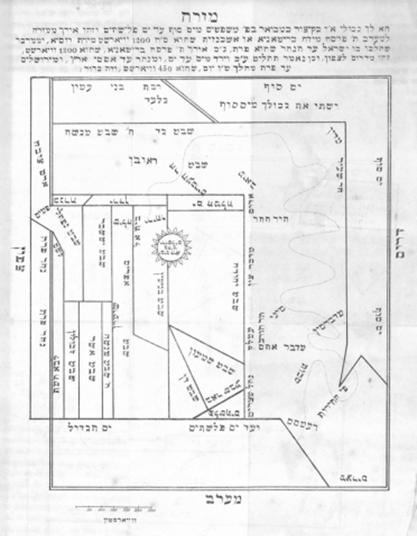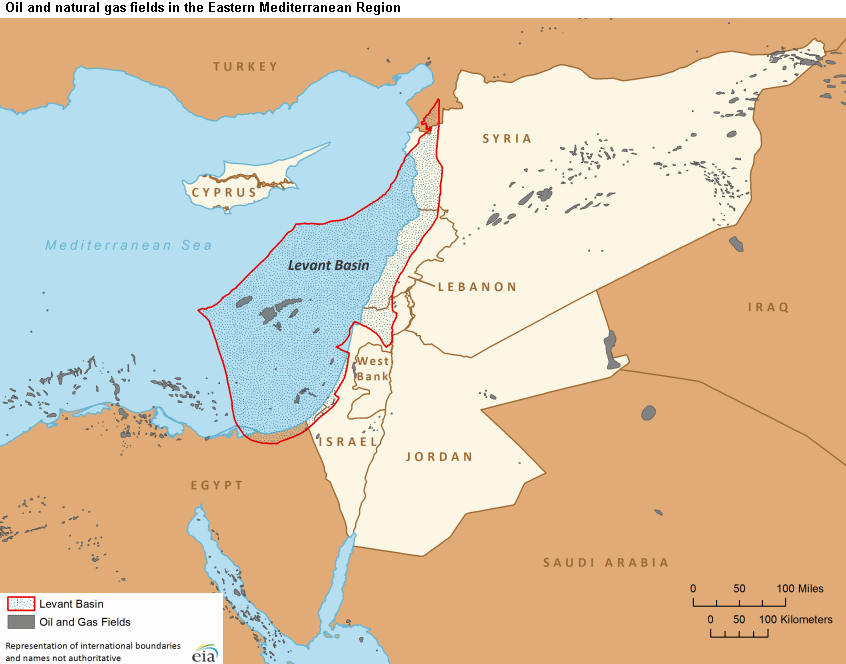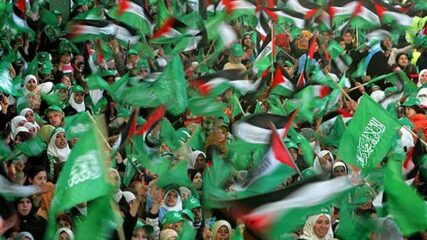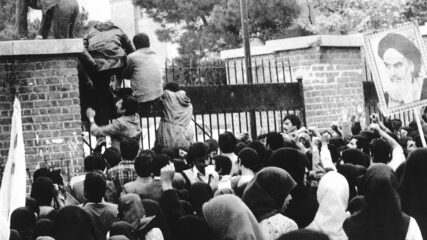By Scott Abramson
A Disadvantaged Land in a Pivotal Location
The State of Israel lies at the eastern edge of the Mediterranean Sea, at the intersection of three continents: Asia, Africa and Europe. Together with its Lebanese, Syrian and Jordanian neighbors, it forms the subregion of the Middle East variously known as the Levant, Greater Syria and Bilad al-Sham.
Since geography ordained the Land of Israel to be a land bridge connecting three continents, history destined it to be both a crossroads of cultures and a borderland — and thus a battleground — for warring empires. For most of its history, the Land of Israel was ruled by such empires, often from neighboring Egypt or nearby Mesopotamia.
But whereas Egypt has the Nile Delta and Mesopotamia the Tigris and Euphrates floodplain, the Land of Israel has no natural center, no geographical axis around which life in the country revolves. This is not all Israel lacks. The Jewish state has no navigable rivers, little arable land, few freshwater resources and mineral deposits, and only a single, if less than optimal, natural harbor: Haifa Bay.
Nor is Israel the vast country its starring role on history’s stage would suggest. Indeed, if a country’s total area were proportionate to its historical glory, the State of Israel would cover a continent instead of a meager 8,000 square miles. If Israel were a U.S. state, it would be the fourth smallest, its land (and population) slightly smaller than New Jersey’s.
The Traditional Jewish Conception of the Land of Israel’s Geography
To its natives, a land’s first importance lies not in the fertility of its soil or the natural resources under it, but in the events that occurred on it and the people, their ancestors, who inhabited it. For the Jewish people, both a national and a religious community, this spatial sanctification has been embraced by secularists and believers alike. That the Land of Israel was, in the words of a 19th-century Scottish scholar, “the least of all lands” was of little consequence; to the Jewish people throughout the ages, it had been the dearest of all lands. Thus, when the British government offered the Zionist movement part of fertile, resource-rich Uganda (today’s Kenya, in fact) to build a national home, the proposal was rejected, never mind that the persecuted Jews of the Russian Empire stood in dire need of a refuge.
Zionism’s victory of sentiment over pragmatism was once explained by Chaim Weizmann (Israel’s first president) to a lord in the British Parliament. When asked why the Zionists refused to consider any alternative to “the least of all lands” as the scene of their national rebirth, Weizmann replied, “My dear lord, why is it that you insist on driving 2½ hours every weekend to visit your elderly mother when there is a perfectly decent nice old lady living just across the street?”
So strong was the attachment of the Land of Israel’s sons and daughters to their motherland that even though Jews of the Diaspora had left the land, its geography hadn’t left them. Wherever they lived, Jews followed a calendar based on the agricultural rhythms (for sowing and harvesting) and climate of the Land of Israel. Naturally, to live in one land and to follow the calendar suited to another presented certain difficulties. On the holiday of Sukkot, for example, Jews in Europe had to import etrogs (citrons), one of the fruits native to the Land of Israel and only cultivable in tropical or subtropical climates, at great expense.
The geography of the Land of Israel even informed Diaspora Jews’ sense of direction. Terms of cardinal orientation (north, south, east, west) used by Jews in the Diaspora reflected the geographical perspective of Jews living in the Land of Israel. The points on the compass, in other words, took their names from landmarks in and around the Land of Israel. Yam (“sea”), for instance, was the common word for west because the Mediterranean forms the Land of Israel’s western border. Similarly, the massacres that gave rise to the First Aliyah were called Suffot BaNegev (“storms in the south”) because the Negev, the southern part of the Land of Israel, signified the south, and the massacres occurred in the south of the Russian Empire (Ukraine).
Against this backdrop of the Land of Israel’s geography in the cosmology of the Jewish people, we’ll now look at the interaction between Israel’s physical and human geography.

Israel’s Three Longitudinal Zones
Israel is best understood as a country that geology has divided into three parallel, lengthwise sections. Each section is defined by a different landform, and each is the Israeli part of a regional whole: coastland in the west; upland in the center; and lowland in the east. These three sections — the Coastal Plain, the Central Highlands/Central Hill Country and the Jordan Rift Valley — are themselves divisible into smaller geographical units.
Because these three sections’ internal subdivisions have their own names and might appear in places to be unrelated, particularly where crossed by water or valleys, the landscape can be deceptive. Accordingly, the student of Israeli geography should take care to see unity in the map of Israel rather than division and cohesion more than fragmentation. The following overview of Israeli geography is presented in this holistic light.
1. The Israeli Coastal Plain
Bounded by the Mediterranean Sea on the west and extending from the Gaza Strip in the south to Lebanon in the north, Israel’s Coastal Plain is a thin ribbon of seashore that gradually broadens as its trends north-south. In ancient Israelite lore and in many psalms, the sea is an object of dread personified by the sea monster Yam. Nor were the Israelites a maritime people like their Phoenician cousins — an observation reiterated over the ages since it was first made two millennia ago by the Jewish historian Josephus. To the Israelites’ Israeli descendants, however, the sea has not been a monster; on the contrary, it has been their guardian angel, its blessings difficult to overstate.
The Mediterranean is Israel’s outlet to the world, and as such, it was Israel’s lifeline throughout its neighbors’ decades-long siege. Although many Arab leaders had for decades repeated the Muslim Brotherhood’s call in 1948 to drive the Jews into the sea, it was the Mediterranean that rescued Israel from the fate its neighbors had intended for it: “politicide” — the murder of a state — as Abba Eban termed it.

The Mediterranean not only delivered Israel from death, but also has in many ways given Israel life. It now supplies most of Israel’s drinking water, thanks to the five desalination plants along Israel’s coast, one of which is the world’s largest of its kind. The Mediterranean has also turned Israel into an energy powerhouse and natural gas exporter. When Israel discovered vast reserves of natural gas offshore in 2009 and 2010, 60 percent of Israel’s electricity was generated by coal. Today, 70 percent is generated by natural gas. Meanwhile, coal, a much more costly and environmentally destructive fuel source, is being phased out.
The Mediterranean is helping Israel keep the lights on in another way. An energy station at the port of Jaffa that generates electricity by harnessing wave power was connected to Israel’s electrical grid in 2024.
If the Mediterranean is Israel’s outlet to the world, Israel’s ports are the world’s inlets to Israel. But they haven’t always been so.
Israel’s ports had languished since the 14th century when the Mamluk Empire, which ruled the country, pursued a policy of intentional port destruction. Laying waste to the ports, the Mamluks reasoned, would dissuade the Christian crusaders they had evicted from returning. In the ensuing 500 years, the country’s ports stood forlorn and neglected (except for a brief revival of the port of Acre from about 1750 to 1831).
When Zionist immigrants first began settling the country in 1882, they arrived through the port of Jaffa, the country’s main port. But this gateway to Palestine was no grand entrance. It was so rocky and its water so shallow that it couldn’t accommodate ships of any bulk. Zionist incomers — and indeed anyone else who arrived by sea — had to go through the rigamarole of an offshore transfer. Within sight of Jaffa but still on the open sea, the passengers would alight from the steamships on which they had made their voyage and board rowboats that would take them to shore.
Since then, Israel’s ports, like the Zionists who were ferried into Jaffa’s harbor, have come a long way. The transformation of the country’s ports began in the 1930s. In 1936, after Palestine’s Arabs called a general strike and rose in revolt, the port of Jaffa was closed to Jewish traffic. It therefore fell to Jews of neighboring Tel Aviv to come up with an alternative. Their answer was the port of Tel Aviv, which was inaugurated within months.
Much more significant, however, was the opening of the port of Haifa in 1933. Haifa was a much better candidate than Tel Aviv for a port because, as the country’s only natural harbor, Haifa Bay was large enough to shelter vessels and deep enough to allow anchorage. Within three years the port of Haifa was not just the busiest port in the country, but also the busiest port in the Levant.

Nor was Haifa Bay’s topography the only thing that destined the city for this distinction. Haifa’s commerce was stimulated by its location as the terminus of the Jezreel Valley Railway and the Kirkuk-Haifa oil pipeline. The Jezreel Valley Railway, which the Ottomans had begun and the British had improved, traversed Palestine through the one major east-west gap in Palestine’s Central Highlands. Using this railway to transport concrete, the Iraqi Petroleum Co. (a consortium owned in part by Exxon, Mobil, Shell, BP) laid a pipeline extending from its oil holdings in northern Iraq to its refineries at Haifa. In the 1930s, when the Arabs revolted against the British, and in the 1940s, when the Jews did likewise, both peoples sabotaged the pipeline and the railway.
But while the pipeline was shut off by Iraq in 1948 and the railway brought to an end at the Jordanian border, the port of Haifa did not lose its importance. It became the base of the Israeli navy and, much later, the favorite port of call for America’s Mediterranean-based Sixth Fleet. As for the port of Jaffa, it was eclipsed by the port of Haifa, and its importance receded. The port of Tel Aviv, for its part, remained little more than a less desirable alternative to the port of Jaffa. It finally closed in 1965 after the port of Ashdod, artificial and built on the open sea, opened in 1965 and became the country’s second-busiest port.
The Coastal Plain, even more so than the coastline that forms the western border, has also come a long way in the past century. On the eve of the First Aliyah, the Coastal Plain was a landscape of dune fields, malarial swamps and uncultivated land degraded by centuries of overgrazing. Even wells were scarce because the locals thought the groundwater lay too deep beneath the surface, and they had no means of tapping it. Just as cultivation was rare on the coastal plain except in the citrus groves, few people lived there. Apart from the Negev desert, the Coastal Plain was the most thinly populated region of the country. Not a single paved road, much less a railway, ran the length of the Coastal Plain, and none would until the 1920s.
Fast-forward a century. Whereas the Coastal Plain had been a backwater where people were few and built-up areas scarce, today it is the Israeli heartland. On this narrow belt of seashore (25 miles at its widest and nine miles at its narrowest) about 60 percent of Israel’s population is concentrated. In the Tel Aviv metropolitan area alone (Gush Dan, as the locals call it), about 45 percent of the country lives. Here one not only finds the center of Israel’s population, but also Israel’s centers of culture, commerce, industry and finance, as well as its high-tech industrial parks, diamond-polishing plants and citrus farms.
Where there had been no paved road a century ago, there now runs Israel’s Coastal Road (Highway 2), Israel’s first freeway, which traces the path of the country’s ancient trade/invasion route, the Via Maris. Where there had been no coastal railway a century ago, there is now Israel’s mainline railway. Where there had been only modest citrus cultivation on the eve of the First Aliyah, the Coastal Plain now supports Israel’s citrus belt, whose oranges, grapefruits and lemons have made Israel a major citrus producer and exporter.
However, the geology of the Coastal Plain has been a mixed blessing. While Israel has used the central Coastal Plain’s rich red loam (a mixture of sand, silt and clay) to become a major citrus producer, Hamas has used the Gaza Strip’s loose subsoil of dry sandstone in the service of less noble objectives: digging tunnels for smuggling weapons, infiltrating Israel, and killing and abducting Israelis. Nor is Hamas the first combatant to exploit the ease with which Gaza’s soil can be excavated for military ends. Alexander the Great’s siege of Gaza is the first documented instance of tunnels being used in warfare in the territory.
2. The Central Hill Country

The middle of Israel’s three lengthwise sections, running parallel to the coast, is Israel’s mountainous spine, the Central Highlands. The Central Hill Country might be imagined as a long chain of hills, its hills the links, the valleys the spaces in between. To Jewish Israelis, the Central Hill Country’s importance springs from two sources: history and security. The archaeological record tells us that it was in the Central Hill Country — specifically in the hills of Judea — that the Jewish people entered history. Hence the name “Judea.” Besides being the cradle of the Jewish people, it’s also the site of Jerusalem and other of the Jews’ most storied cities: Hebron (the city of the Patriarchs and Matriarchs) and Bethlehem (the birthplace of David and the resting place of Rachel).
After the Romans laid waste to their province of Judea (the Latinization of the Hebrew Yehudah), exiling the Jews and forbidding their return, the center of Jewish life in the Land of Israel migrated north to another part of the Central Hill Country, the neighboring province of the Galilee. There the Mishna would be codified, the Palestinian Talmud redacted, Hebrew vowels standardized, and Kabbalah born. As Safed and Tiberias are in the Galilee and Jerusalem and Hebron in Judea, all four of Judaism’s holy cities are in the Central Hill Country.
Besides being the scene of some of Jewish history’s most pivotal events, the Central Hill Country has afforded some measure of security to residents of a country that has been fought over by dozens of conquerors. For millennia, the Central Hill Country, a mountain range flanked by lowlands, has served as a natural barrier to invasion, blocking westward and eastward passage and thus invaders. Only one gap in the Central Hill Country, that created by the Jezreel Valley, allowed invaders in wartime and traders in peacetime passage between the coast and the interior. But for the modern State of Israel, the portion of the Central Highlands most integral to Israel’s security are the hills of Judea and Samaria, mostly in the West Bank. Exactly why this is so will be explained later.
The Galilee
The Central Hill Country begins in the north with the Galilee, which is separated by a small valley into upper and lower halves, the former twice as high. The Galilee is the one region in Israel proper (Israel within the 1967 borders) where Jews don’t predominate. The Galilee is the seat of Israeli minorities, the most numerous of whom being, from the most to the fewest, Arab Muslims and Christians, Druze, Arameans/Maronites, and Circassians/Adyghe. The need to secure the Galilee from attacks by the PLO in Southern Lebanon (itself an extension of the Upper Galilee) was the impetus behind Israel’s First Lebanon War (codenamed Operation Peace for Galilee).
The Jezreel Valley
South of the hills of the Galilee and north of the hills of Samaria in the West Bank, there intervenes the largest gap in the Central Hill Country, the Jezreel Valley. Though in local usage it is referred to simply as “the Valley,” the meaning of the Hebrew word Jezreel — God sows — hints at one of its defining features, its fertility. Not for nothing is this fertile, triangle-shaped plain encircled by mountains and nourished by hillside brooks and springs nicknamed “the Breadbasket of Israel.” But the Jezreel Valley is not merely a granary where cereal crops (wheat and barley) spring forth; it also has a strong claim to the title of Israel’s garden. The chickpeas for Israel’s hummusiyas are sourced here.
Like the Coastal Plain, the Jezreel Valley today bears no resemblance to the landscape that greeted the Zionist pioneers. But whereas the Zionists set about transforming the Coastal Plain during the First Aliyah (1882-1903), the Jezreel Valley didn’t become an arena of intensive Zionist endeavor until the Third Aliyah (1919-1923). In his memoirs, Moshe Dayan observed that the “Jezreel at the time was infested with malaria and typhus and a quagmire of mud in winter.”
That quagmire was swampland caused by the winter flooding of the valley’s river, the Kishon. These floods created the ideal ecosystem for malaria-bearing mosquitos and typhus-bearing fleas. The Ottomans, in their mania for timber, worsened the problem of rampant infectious disease by cutting down trees. Nor were insects the only creatures that preyed on those who dared to settle in or even pass through the valley. Like the Coastal Plain, the Jezreel Valley, open and exposed, was ideal hunting ground for land pirates, bandits who exploited the terrain by pillaging.
For all these reasons, the Zionists in the Jezreel Valley had their work cut out for them. In the early 1920s they set about draining swamps — almost always contracting malaria in the process — taming the flooding river, paving roads, and establishing expertly designed planned communities like Nahalal, the first workers’ moshav. Zionist endeavor in the Jezreel Valley was nothing less than a feat of alchemy, of turning wasteland into wonderland. Throughout the 1920s, the Jezreel Valley was the focus of Zionist energies, and the transformation the pioneers wrought was so rapid and so thorough that the reclamation of the Jezreel became the stuff of Zionist lore and poetic inspiration.
For secular poets like Avraham Shlonsky and Uri Zvi Greenberg, who wrote odes to Zionist pioneering in the valley, the renaissance of the Jezreel Valley inspired a quasi-religious reverence. To them, Zionist pioneering had made the Jezreel sacred ground in the same way that, for believers, the Holy of Holies had made the Temple Mount sacred ground. Another poet, albeit one more measured in his praise, who hymned the transformation of the Jezreel Valley was Natan Alterman. Alterman’s “Shir HaEmek” (Song of the Valley) became one of Israel’s best known poems after it was set to music in the 1930s. The glorification of the Jezreel Valley had become such an Israeli habit that it was satirized by Meir Shalev, Israel’s Mark Twain and a Nahalal native, in his novel Blue Mountain.
Judea and Samaria
The spread-out hills of Samaria and the compact hills of Judea, a gentle depression separating them, forms the central section of the Central Highlands. The Palestinian Arabs, like the Jews in the two ancient Jewish states and unlike the plain-dwelling Jews in the present Jewish state, have lived mostly in the hills, particularly in the Galilee, Judea and Samaria. This was no accident. Throughout history, the highlands of Judea and Samaria in particular, where Arabs predominate, have afforded their residents many advantages: hydrological, atmospheric, topographic, defensive and geological. The West Bank receives ample rainfall, has abundant springs and sits atop the middle of the country’s three aquifers. (An aquifer is a kind of natural underground “tank” of rock or sediment — clay or sand — that both filters and holds water that can be drawn through wells.) Less subject to contaminants, the groundwater produced by the aquifer is far more desirable (i.e., healthier) than surface water or rainwater caught in a receptacle, and the mountain aquifer that underlies the West Bank is both the country’s largest aquifer and the one with the best quality yield. Besides being water-rich, the West Bank affords herdsmen ample rangelands for grazing goats and sheep and peasants lush hillsides for terraced farming.
The central section of Israel’s Central Highlands is a geostrategic trophy that offers its possessor military advantages, defensive and offensive. Both the elevation and compactness of Judea and Samaria make these hills difficult to access and easy to defend. They serve as a natural barrier to invasion from the east, particularly as climbing the hills from the depths of the Jordan Valley would be suicidal for invaders. Moreover, the density of the hills makes for ideal fortifications, behind which defenders can mount ambushes, escape detection and conceal weapon emplacements. Besides providing natural cover, the limestone of the hills (the famous Jerusalem stone), quarried for the masonry of local homes, provides excellent material for fortifications. It was in these hills that these tactics and these resources were employed to marvelous effect by the Jewish rebels of antiquity. They enabled the Hasmonean clan (the Maccabees) to prevail over their Syrian-based Greek overlords and restore Jewish sovereignty. They also enabled Jewish rebels to resist the full force of the Romans during the Great Revolt (66-73 C.E.) and the Bar Kokhba Revolt (132-135 C.E.).
Many Israelis are leery of a peace agreement with the Palestinians because it would deprive them of the geostrategic advantage that holding the West Bank affords. The fact that the West Bank towers over the Coastal Plain means that, with the West Bank in enemy hands, Israel’s underbelly — an undefended Coastal Plain — would be lethally exposed. Israel’s ill-wishers would have an ideal observation post from which to scope out threats and an ideal gunner’s perch from which to rain down rockets and mortars on the Coastal Plain — the home of the majority of Israelis, the center of Israeli industry, and the place of its transportation arteries and main airport — potentially bringing Israeli life to a standstill. Together with the West Bank’s topographic advantage, the Coastal Plain’s narrowness adds to Israeli reluctance to retreat to the 1967 borders. At its narrowest point, the distance between the sea and Samaria (the northern part of the West Bank) is about nine miles. An enemy army could descend from hills and form itself into a nine-mile cordon, splitting the Coastal Plain in two.
The Negev Hills
The Judean Hills extend south of the West Bank, under the name Hebron Hills, which fall away in the Negev Basin/Beersheba Depression. Here one enters the fabled Negev desert, which spreads over 60 percent of Israel’s landmass. Like the Jezreel Valley, the Negev presents the appearance of a triangle, albeit with different angles. The Jezreel Valley has the form of an equilateral triangle, its apex pointing north toward the Sea of Galilee, whereas the Negev traces the shape of an inverted isosceles triangle. But geometry aside, the Jezreel Valley and the Negev have little else in common. The Negev, being a desert, is as barren as the Jezreel Valley is fertile. Another region of Israel, the Coastal Plain, offers a similar inversion. Whereas the Coastal Plain is Israel’s smallest region (5 percent of the country) but has the most people (60 percent of the population), the Negev is Israel’s largest region (60 percent of the country) with the fewest people (11 percent).
Hebrew toponymy (place names) is unusually descriptive in that the name of a location often expresses the place’s most conspicuous feature. As we have seen, Jezreel, meaning “God sows,” alludes to one of the valley’s hallmarks, its fertility. Similarly, Negev, meaning “dryness,” hints at the region’s most conspicuous feature: its aridity.
Israel has done much to relieve the Negev’s dryness through the National Water Carrier. Like California, Israel has a moderately wet north and a dry south, but before the California Aqueduct was built to ease that climatic division and irrigate the arid south, Israel’s National Water Carrier had been fulfilling the same function for 10 years. Its original purpose was to channel water from the Kinneret/Sea of Galilee to irrigate the Negev, but it morphed into an elaborate, countrywide grid that integrates all of Israel’s waterworks. Just as the circulatory system pumps blood through veins, arteries and capillaries, oxygenating the human body, the National Water Carrier pumps water through pipes, canals, tunnels, reservoirs and dams to hydrate the Israeli body politic. Although the National Water Carrier has had problems, it is a monument to Israel’s successes in hydraulic engineering and water management.
Israel, after all, is a country that takes water seriously. This started not in 1948, when the state was born, but with the Zionist movement. Water towers, fixtures of early Zionist settlement, were symbols of the movement, and schoolchildren in Israel have been raised on the slogan “Don’t Waste a Drop.” Israelis, moreover, have been conditioned to see long showers or faucets running unattended as sins against nature and treason against the state. Taxes have been imposed to ration water and penalties assessed to punish its misuse and overuse. The four water laws enacted in Israel in the second half of the 1950s to regulate water are criminal statutes, and mayors of Tiberias and Eilat have been personally indicted for their mismanagement. Seen against this backdrop, the National Water Carrier and Israeli advances in sewage treatment, desalination and irrigation receive their proper context.
Until the late 1930s, the Negev for the most part was uncharted territory for the Zionist movement. But this changed quickly in the years leading up to statehood. Viewed in isolation, divorced from its surroundings, the Negev — being remote, waterless and the domain of Bedouins — had little to commend itself to the Zionist movement. But just as words cannot be understood without regard for their context, so a territory cannot be understood without regard to its surroundings. The talk of statehood had awakened the Zionist movement to the fact that the Negev offered just what the Coastal Plain lacked: strategic depth. Once the Zionists appreciated the military necessity of holding the Negev — a natural buffer and a wedge between their enemies — they flocked to the region and, as Yehuda Amichai said, “built the new homeland, like wild hornets in crazed swarms.”
The arrival of one crazed swarm in particular merits mentioning. A joint British-American proposal in 1946 (the Morrison-Grady Plan) called for breaking the country up into four cantons: two under direct British rule and two semi-autonomous provinces (one Arab, one Jewish) under British overlordship. The plan, which the Jews and Arabs both rejected, became irrelevant, just one of many dud plans proposed at the time. But the plan’s allocation of the Negev to the British and to the Arabs jolted the Zionists movement into action.

When night fell on October 5, 1946, the Negev had only a few Jewish settlements and outposts. But when the sun rose over the Negev the next day, 11 new Jewish settlements had taken root. In this instance as before, the Zionists availed themselves of a still-valid provision of Ottoman law that protected a dwelling against demolition as long as it was roofed. Although the Zionists had built roofed structures overnight before (including eight in a single night in May 1939), 11 was a record.
These new settlements were different in other respects, not just in quantity. To establish communities in this far-flung, arid expanse was a bold and unprecedented initiative in Zionist pioneering. These settlers were true frontiersmen, setting up outposts in the howling wilderness and planting the Zionist flag amid the wind-swept dust and sterile sands of the parched Negev. For these 11 settlements to be viable, they needed access to water. The solution came in the person of Simcha Blass, the engineer who would invent drip irrigation two decades later. Under his direction, a pipeline was laid that fateful October night connecting the new communities to a well that had been discovered deep beneath Nir Am.
While the Negev was awarded to the Jewish state under the U.N. partition plan and the region conquered by Israel in the ensuing war, Israel’s continued possession of the Negev was far from certain. At intervals throughout the next eight years, the British and American governments, jointly and separately, pressed Israel to relinquish all or part of the Negev to Jordan or Egypt. Such a concession would endear the Americans to Egypt, which they were courting as a Cold War ally, and enable territorial contiguity between the North African and Middle East segments of the Arab world. American efforts were not crowned with success, and the Negev remained fully Israeli. How ironic, then, that the U.S. Army Corps of Engineers would later build Israeli air bases in the Negev and that the United States would establish its first permanent military base in Israel in the Negev.
The Central Hill Country continues south of the Negev Basin/Beersheba Depression, by way of the Negev Uplands, which proceed along a southwest-northeast orientation all the way down to Israel’s southernmost point, the city of Eilat. The hamlet of Eilat on the Red Sea was the last conquest of Israel’s War of Independence. Even though the Negev had been allotted to the Jewish state under the partition plan, Jordan, with the backing of its British patron, was pressing its claim to Eilat in the armistice negotiations with Israel. To establish Israeli control of Eilat as a “fact on the ground,” Israel mounted Operation ‘Uvda (“Fact”) in the hope of making its possession of Eilat a fait accompli. Israel took the city without a fight and thus clinched its victory in the War of Independence. The Jordanians acquiesced in the Israeli conquest, and the next day the two countries initialed their armistice agreement.
It wasn’t the city of Eilat itself that informed Israel’s decision to mount one last operation. Eilat, in fact, was no city at all. It was a mere fishing village of mud-brick huts manned by British police. Eilat’s desirability lay in its location on the Red Sea. By winning Eilat, Israel won itself another coast, albeit a narrow one of just eight miles, and access to the Red Sea and the Far East beyond.
Israel quickly overcame the problem of Eilat’s isolation by constructing an airport with regular flights to Lod airport (Ben Gurion Airport). The problem of Egyptian aggression, however, was another matter. In line with its policy of frustrating Israeli commerce and shipping by all means at its disposal, Egypt imposed a blockade at a narrow passageway, the Straits of Tiran, connecting to the Red Sea. The Straits of Tiran were of great importance to Israel and not because of a little-known historical curiosity: the documented existence of an autonomous Jewish community, Yotvata, on the island of Tiran in the sixth century. Rather, the straits’ location as Israel’s gateway to the Red Sea made their free passage a necessity. The Egyptian blockade precipitated Israel’s next two wars with Egypt: the 1956 Suez War and the 1967 Six-Day War. Israel’s occupation of the Sinai Peninsula and, thereafter, its peace treaty with Egypt meant that the Straits of Tiran would remain open.
Eilat’s location as Israel’s gate to Asia also makes the city a vital transshipment hub for oil. In the 1950s, Israel built the Eilat-Ashkelon Pipeline to convey oil — mostly supplied by Iran, with which it had cooperative relations — to the Mediterranean. Iranian oil tankers would unload their cargo at a terminal at the port of Eilat, and Iranian crude would be sent to the Mediterranean through the pipeline and refined in Haifa. Iran’s “monopoly” on oil trade with Israel was such that Israel and Iran set up a joint venture in 1968, the Eilat-Ashkelon Pipeline Co., with each country holding a 50 percent stake. While Iran’s supply of oil to Israel, as well as its other dealings with the Jewish state, ended in 1979, the pipeline continues to operate.
Other projects that link the Red Sea, via Eilat, to the Mediterranean Sea have been bandied about for decades. Among these is a high-speed railway to Eilat, a kind of terrestrial alternative to the Suez Canal that would transport freight (and passengers) between Eilat and Israel’s coastal cities. The much less practical “Ben-Gurion Canal” would carve a waterway into the Negev to connect the Red and Mediterranean seas. Talk of these two projects was revived, only to die out again, in 2021 when the Suez Canal was blocked for a week by a massive container ship that ran aground.
It is not only the Mediterranean Sea that visionaries have imagined connecting Eilat with. Israel and Jordan committed to building the so-called Two Seas Canal, a conduit that would channel water from the Red Sea to stabilize the sinking water level of the Dead Sea. In 2021, however, Jordan withdrew from the project.
3. The Jordan Rift Valley

Just as the Central Hill Country is merely the Israeli section of a much larger regional mountain range, so Israel’s third lengthwise section, the lowlands of the east, is part of a transnational geographical system: the almost 4,000-mile fissure in the earth’s surface known as the Great Rift Valley. This immense trench was formed by the fracturing of tectonic plates, and in Israel, as elsewhere along its journey, it shaped the surrounding topography and geology. The Israeli segment of this depression is called the Jordan Rift Valley. Whereas the Central Hill Country alternates between hills and valleys, the Jordan Rift Valley alternates between valleys and lakes. Accordingly, the bottom of this great trough is the bed of a lake where there’s water and the floor of a valley where there isn’t.
The Hula Valley
The northernmost section of the Jordan Rift Valley, the Hula Valley, has been both a lake and a valley. In the 1950s, Lake Hula was reborn as the Hula Valley after the Israeli government drained what had long been a malarial marsh and reclaimed the land. Although the threat of malaria receded, the threat from the Syrians in the Golan Heights, towering over the Hula Valley, persisted. Throughout the 1950s and 1960s, Israeli settlements in the Hula Valley were subjected to artillery barrages from the Syrians overhead. Once Israel conquered the Golan from Syria in the Six-Day War, the Hula Valley was no longer at Syria’s mercy. The Hula Valley is also where the three headwaters of the Jordan River converge after rising on the slopes of Israel’s loftiest mountain, Mount Hermon.
The Sea of Galilee/Kinneret
Next up in the valley-lake alternation that defines the Jordan Rift Valley is Lake Tiberias/Kinneret/Sea of Galilee, which divides the Jordan River into upper and lower courses. The National Water Carrier was built to exploit this lake, Israel’s sole surface-level source of fresh water. The Kinneret once supplied a third of Israel’s drinking water, but today, thanks to Israel’s successes in desalination and sewage treatment, only 5 percent of what Israelis drink originates in the Sea of Galilee.
The Sea of Galilee — specifically, access to its eastern shore — has been a point of contention, perhaps the main sticking point, in Israel’s peace negotiations with Syria. The controversy revolves around the two sides’ views of what the Syrian-Israeli border ought to be. The original border between Syria and Israel was demarcated in 1923 by the French, which ruled the Syrian Mandate, and the British, which ruled the Palestine Mandate. This border placed the Sea of Galilee entirely in Israel, denying Syria access to its eastern shore. But in the 1948-49 Arab-Israeli war, Syria made some modest territorial gains, including the eastern shore of the Sea of Galilee. But in the 1967 Six-Day War, Syria lost not only lost those gains, but also more territory to Israel: namely, the Golan Heights. Peace negotiations between Syria and Israel have snagged on which border, 1923 or 1949, should separate them. The Assad dynasty insisted on a return to the 1949 armistice line, while the Israelis insisted that the British and French defined the border in 1923. Shimon Peres, who participated in negotiations with Syria, vowed that “no Syrian would dip his toe in the lake.”
Jordan Valley Proper
South of the Kinneret, where the Lower Jordan begins, the Jordan Valley also begins. The Jordan River itself, which, of course, gave its name to the Jordan Valley, has been at the center of regional hydropolitics and conflict since Israel’s establishment. The conflict over the Jordan River was one of the tripwires on the path to the Six-Day War, and in Israeli history the three years between mid-1964 and mid-1967 are remembered for the “Wars Over Water.”
The aquatic conflict began in earnest not long after Israel’s National Water Carrier went online in 1964. The Syrians, aggrieved that Israel was diverting the Jordan River and thereby reducing its flow, began firing on Israeli patrols around the Water Carrier. Syria also set in motion its own plan to divert one of the Jordan River’s tributaries, the Banias. The two sides skirmished for years, culminating in an Israeli operation in mid-1966 that destroyed the Syrian waterworks intended for the diversion scheme. Tensions continued to escalate, finally erupting in the Six-Day War. Nor was Syria the only regional actor that tried to incapacitate the National Water Carrier. Fatah’s maiden operation, launched at the beginning of 1966, was an unsuccessful attempt to blow up part of the National Water Carrier.
As for the Jordan Valley, as against the Jordan River, its geostrategic importance is such that many Israelis insist on retaining the valley under any peace agreement with the Palestinians. They contend that control of the Jordan Valley affords Israel much-needed strategic depth. It also enables Israel to intercept invaders from the east and restrict cross-border smuggling and infiltration, in the same way Israel had on the Egyptian-Gaza border until it withdrew from Gaza in 2005. Lastly, they point out that the hills on the west side of the Jordan Valley have the virtue of being easily defended because they can be traversed at only five east-west passes.
The Dead Sea and the Arava Valley
The Jordan River continues its downward course through the Jordan Valley proper before emptying into the Dead Sea, a salt lake and, at some 1,400 feet below sea level, the lowest point in the world. The mineral-rich Dead Sea is the source of the one natural resource Israel and the Yishuv before it have trafficked in since the 1930s: potash, a mineral with various uses but principally fertilizer. The Arava Valley, like the Dead Sea to its north, is also divided by the Israeli-Jordanian border. In part a savanna, the Arava Valley abounds with two of Israel’s other mineral resources: phosphates (also used for fertilizers) and copper ore. The mines from which the copper is sourced are the same ones tapped by the Israelites in the era of David and Solomon. In the time of David, copper was used for stonemasonry and ornaments, not the electrical cables and circuit boards of today. The Arava is where drip irrigation — irrigation by means of a trickle, not a torrent — was invented and where almost half of Israel’s vegetables are grown.









